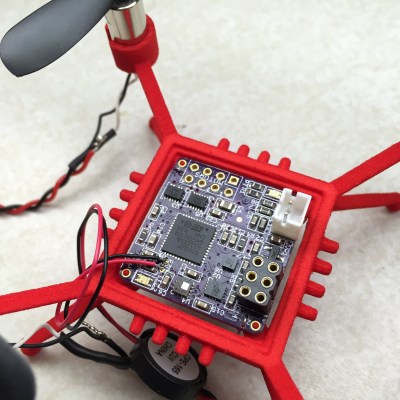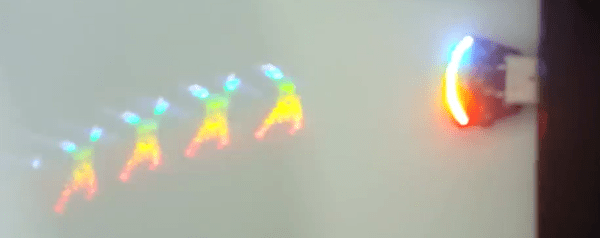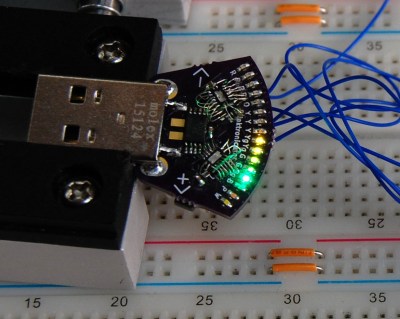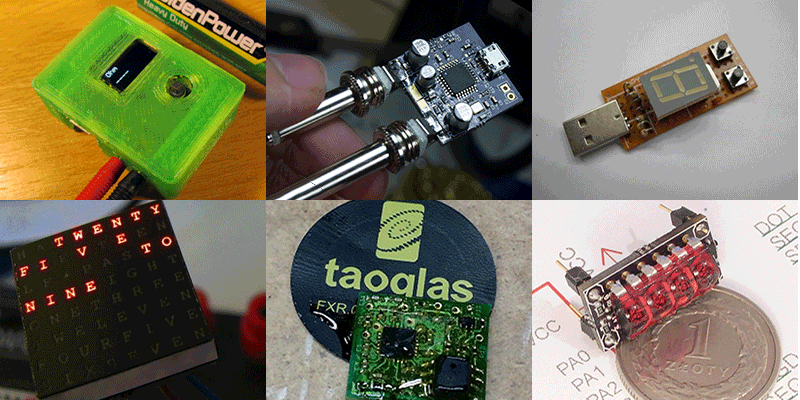It is mind-boggling when you think about the computing power that fits in the palm of your hand these days. It wasn’t long ago when air-conditioned rooms with raised floors hosted computers far less powerful that filled the whole area. Miniaturization is certainly the order of the day. Things are getting smaller every day, too. We were so impressed with the minuscule entries from the first “Square Inch Project” — a contest challenging designers to use 1 inch2 of PCB or less — that we decided bring it back with the Return of the Square Inch Project. The rules really were simple: build something with a PCB that was a square inch.
Grand Prize
It was hard to pick, but there can only be one grand prize winner. This time around that honor goes to [Danny FR] for a very small smart motor driver for robotics. The little board takes an I2C link to a microcontroller and does PID control with RPM feedback. No need for an H-bridge or any sophisticated control electronics — that’s all onboard.
The board is a great fit for a motor and makes it easy to build moving projects. That was the grand prize, but there were some other great entries that won in specific categories, too.
Best Project
[Drix] likes to know where things are. The Hive Tracker uses laser “lighthouses” that sweep across the room. A special microcontroller with a dedicated hardware block reads the laser light and triangulates its position relative to the lighthouses with a great deal of precision. A picture’s worth a thousand words, so:
The high-speed reading of the lasers uses “Programmable Peripheral Interconnect” — a feature of a Nordic BLE microcontroller that lets the chip read timestamps in hardware without interrupting the processor. The little boards hook up to a hub board which is also pretty small.
We’re hackers, so we think a few bare PCBs connected to another PCB can be artistic. But most people have something different in mind.
Best Artistic Project
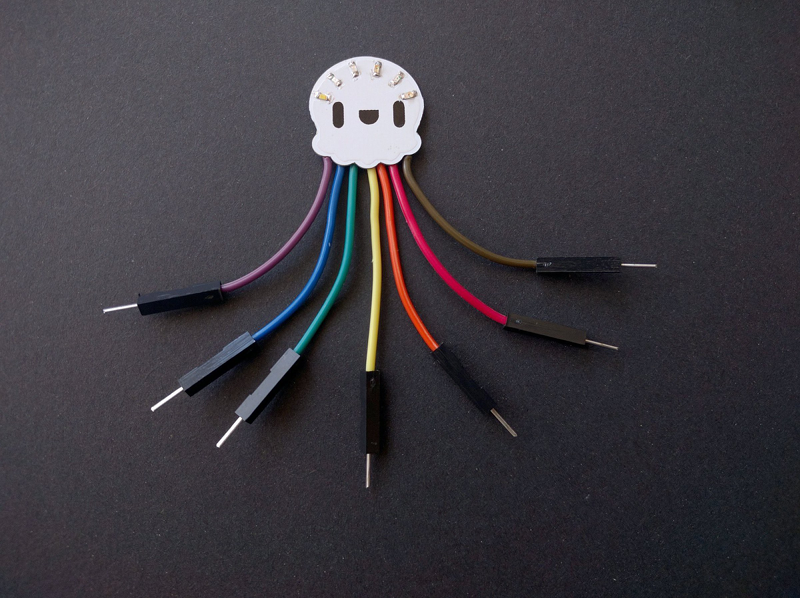
If you hang out at Hackaday.io much, you’ll recognize [ꝺeshipu] and his entry was one of those things that you immediately know you could use, but also brings a little smile to your face when you use it. How often do you need to plug some LEDs into a breadboard? Why not do it with a Rainbow Jellyfish?
The circuit operation should be obvious. We really liked the color-coded wiring. You could probably use at least two of these so they could keep each other company. You could probably even use this as part of a badge.
Best Social Media Award
Speaking of badges, [nwmaker] built a badge that looks like another animal — an owl called PurpleSnowy. Again, the circuit is simple enough, but what caught our eye on this project was how well the social media promotion of it was. Maybe cute owls are just easier to go viral, but we liked it.
Best Documentation
 [Kris Winer] (remember that name), built a very high-tech spectrometer project. Not only was it small in size, but at $25 it was also small in price. The project used the AMS AS7265X 3-chip set to provide an 18 channel, 20 nm FWHM spectrometer. The documentation was very well done and we were impressed with the fitment of the chips on the board.
[Kris Winer] (remember that name), built a very high-tech spectrometer project. Not only was it small in size, but at $25 it was also small in price. The project used the AMS AS7265X 3-chip set to provide an 18 channel, 20 nm FWHM spectrometer. The documentation was very well done and we were impressed with the fitment of the chips on the board.
Many Runners-Up
We had so many great entries that it was hard to pick so we named several runners-up.
[Greg Davill’s] Bosun frame grabber that uses an FPGA to capture images from a FLIR Boson camera.
[Kris Winer’s] high-tech $25 spectrometer project (from above) was also runner-up, and [Kris] was also recognized for sensors that can smell and hear.
If you want something less science-related, the Rotovis-Mod1 by [zakqwy] makes it easier to build persistence of vision displays. Of course, as hackers, we love an oscilloscope and [Mark Omo’s] 20 msps scope that fits in one inch caught our imagination for making some really cool instrument panels.
You really should look at all the entries — they were amazing. [Kris] really went all out, taking two runner up slots and the best documentation prize.
Recap:
Speaking of prizes, The grand prize was $500, and the other prizes received $100 Tindie gift certificates. Thanks to OSH Park, the runner ups also got $100 OSH Park gift cards — that’s a lot of one inch PCBs.
- Grand prize: Smart Motor Driver for Robotics
- Best Project: Hive Tracker
- Best Artistic Element: Rainbow Jellyfish
- Best Social Media: Purple Snowy
- Best Documentation: Compact, $25 spectrometer
- Runner-Up: Compact, $25 spectrometer
- Runner-Up: Boson Frame Grabber
- Runner-Up: Rotovis-Mod1
- Runner-Up: STM32L4 Sensor Tile
- Runner-Up: 1 Square Inch 20msps Oscilloscope
Will this be our last inch square contest? The magic 8 ball says probably not, so don’t stop thinking small and look for your chance to enter your design in the next contest.








